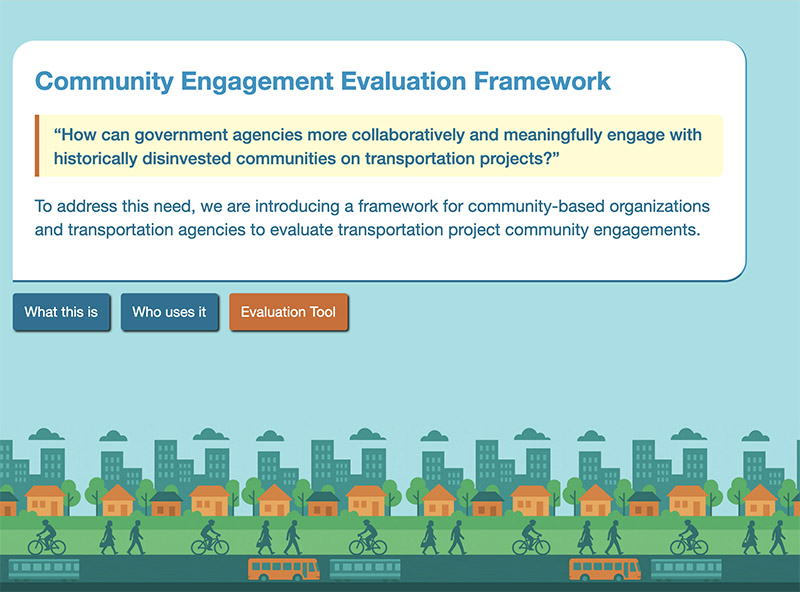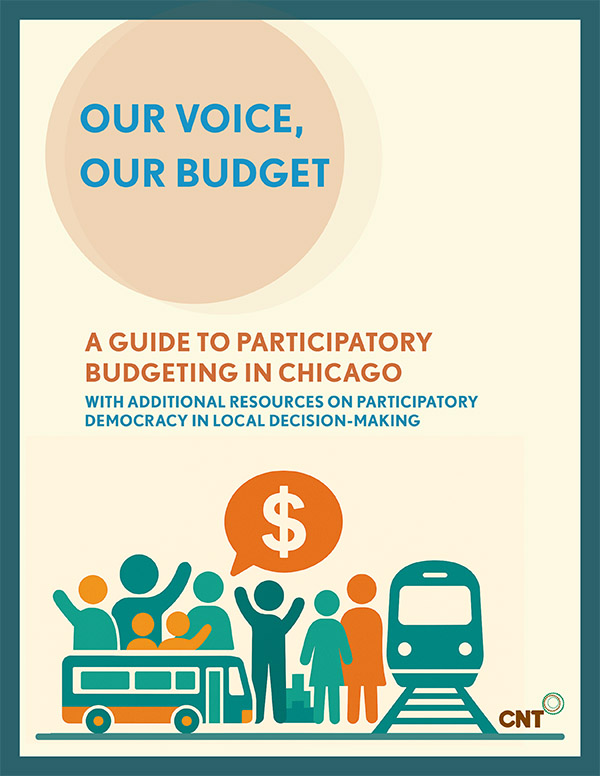Better, fairer planning that’s inclusive of riders and residents requires consultative connections between transit and other government agencies. But not all consultative relationships are created equal, and reporting on results of such engagements is often anecdotal at best.
Center for Neighborhood Technology has worked to convene government, community, and private sector partners for years. A couple of recent examples where we documented this type of work include:
- We co-produced a report with Transit Center in 2024 on LA Metro's outreach strategies
- We also helped support a similar consultative relationship the CMAP CARE program, in 2022-2023
Our goal in creating the accountability framework and a new report, Our Voice, Our Budget: A guide to participatory budgeting in Chicago, was to identify best practices in measuring the success of these types of engagements. We've used what we learned to create a new Community Engagement Evaluation Framework tool.
Community Engagement Evaluation Framework
We hope this tool serves as a starting point for conversations between government agencies/community engagement project teams and community-based organizations about the quality of their work together. This might include ways to improve their process or modify processes toward more collaborative decision-making, especially in historically marginalized and disinvested communities.
Over the past year, in partnership with Equiticity and Little Village Environmental Justice Organization, we interviewed multiple agency leaders in the Chicago area and conducted research to survey best practices to measure community engagement nationwide. Check out the tool at: eval-framework.cnt.org
Our Voice, Our Budget: A guide to participatory budgeting in Chicago
This is an educational resource that provides an overview of participatory budgeting in Chicago. The goal of this resource is to help audiences understand what participatory budgeting is, where it takes place in Chicago, how it has allowed community voice to impact transportation infrastructure, and what other forms of participatory democracy can be explored.
These resources can be used by CBOs, ward offices, and any other interested parties who would like to see participatory democracy in their community.
Read the guide here.

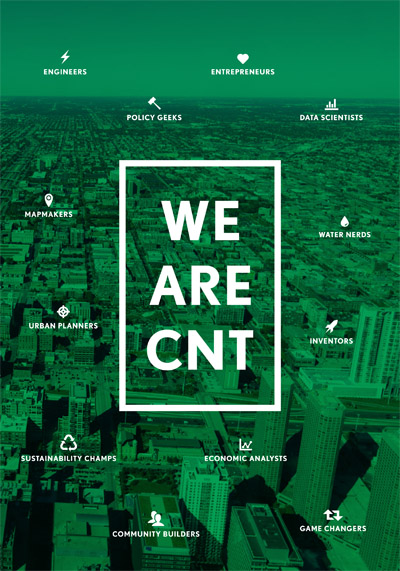
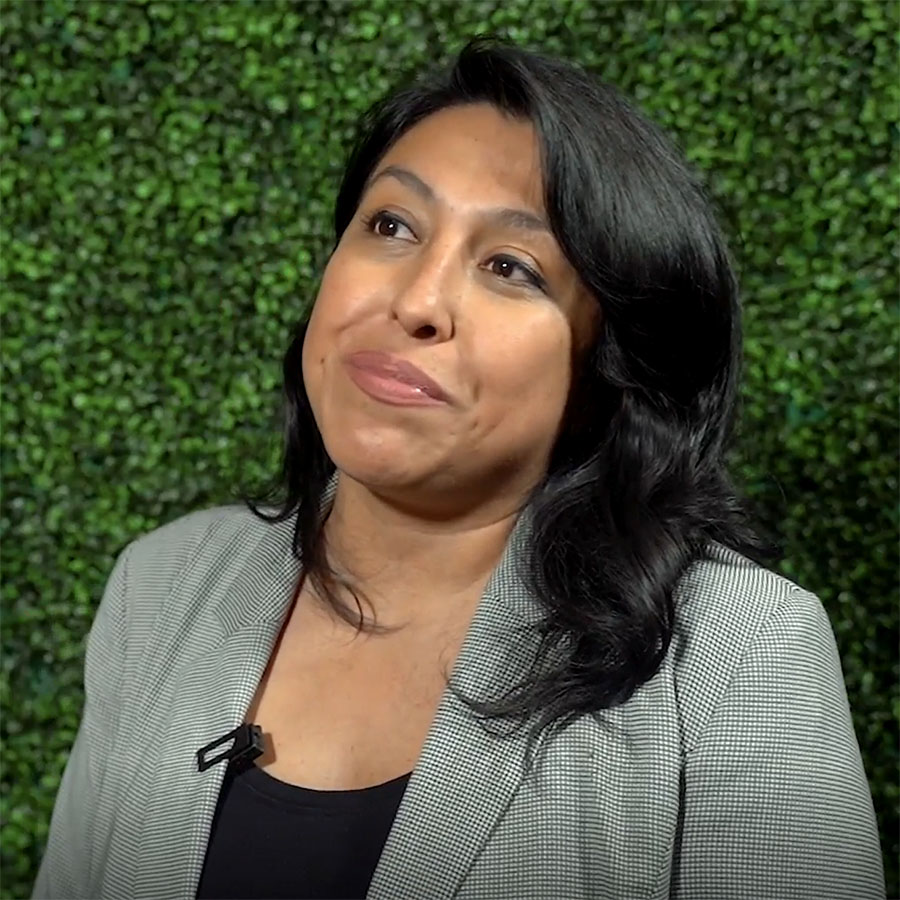
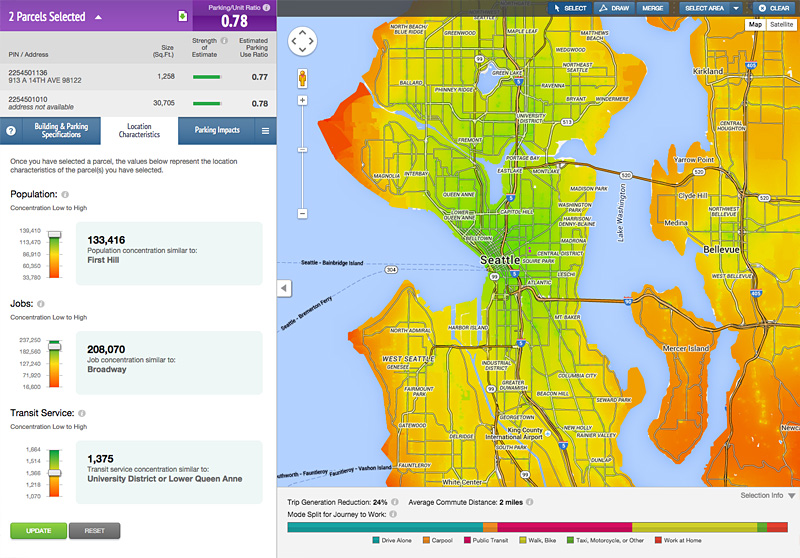
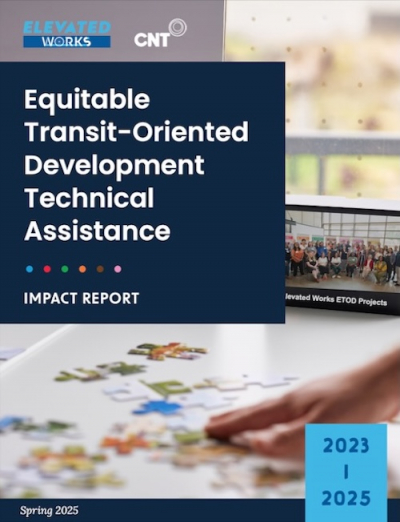
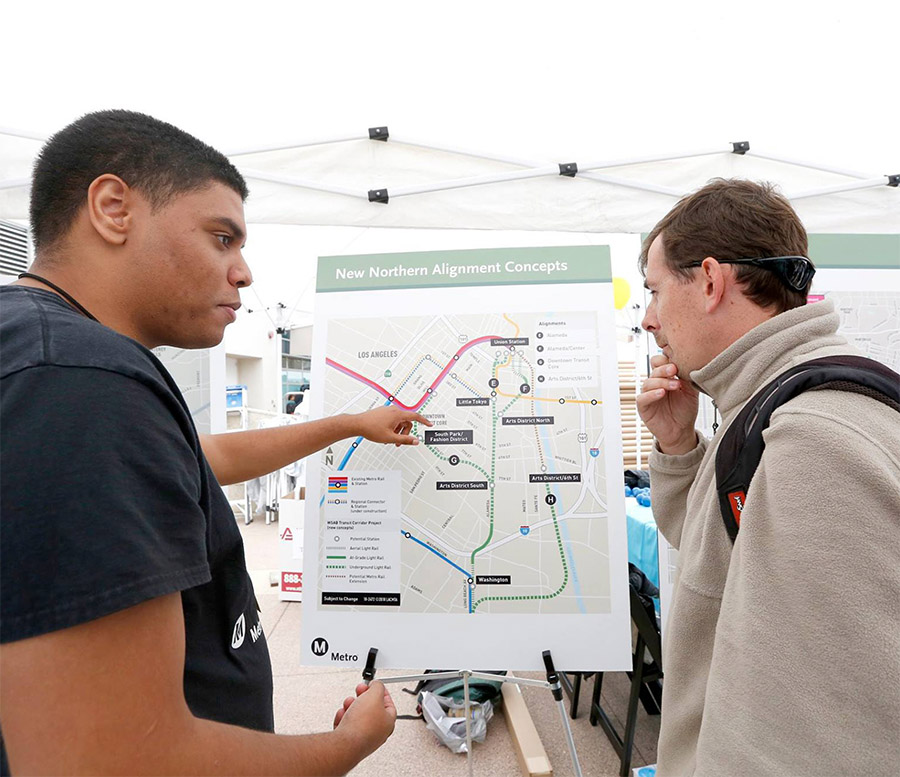 Strengthening Transit Through Community Partnerships
Strengthening Transit Through Community Partnerships